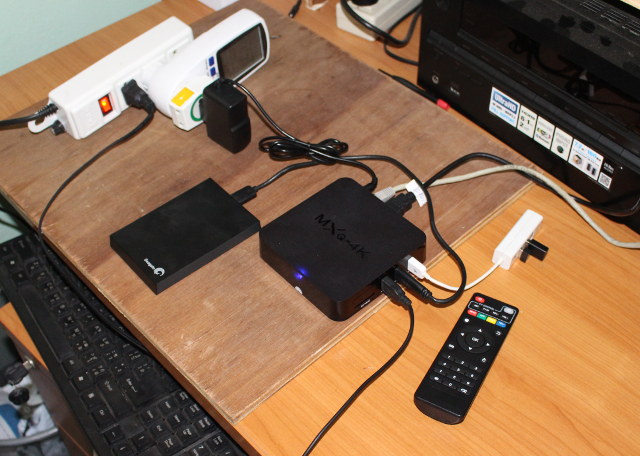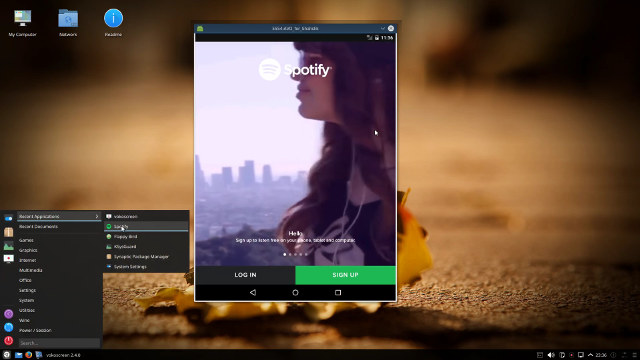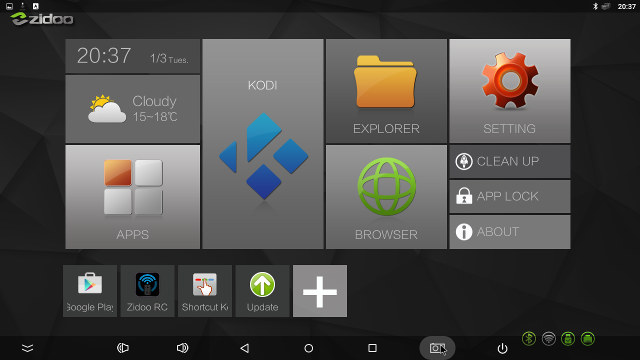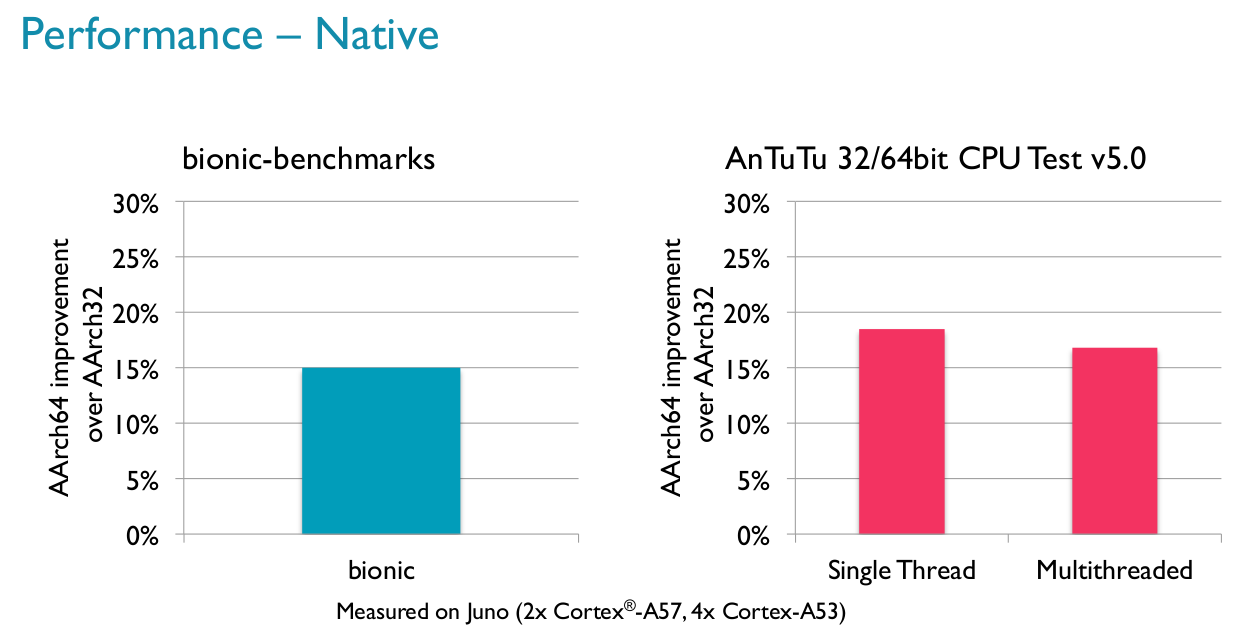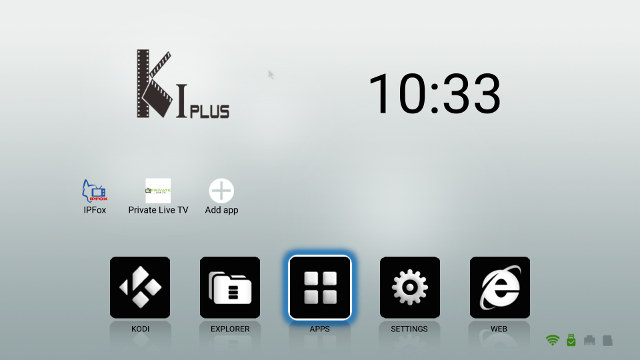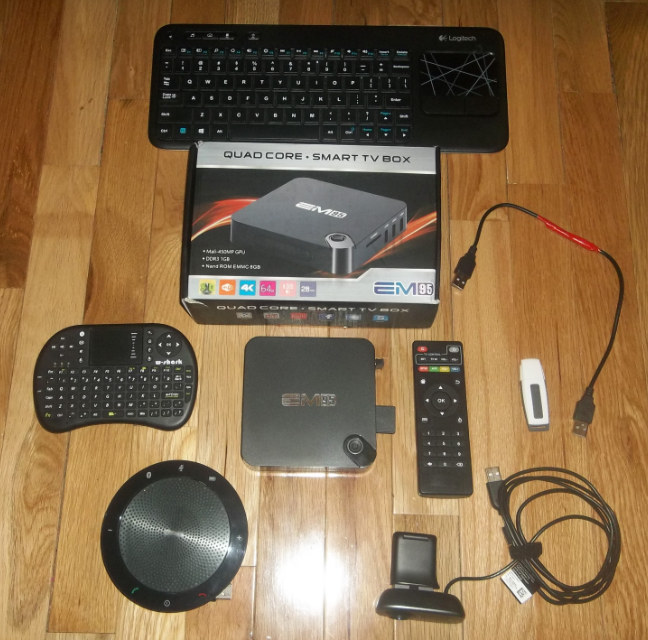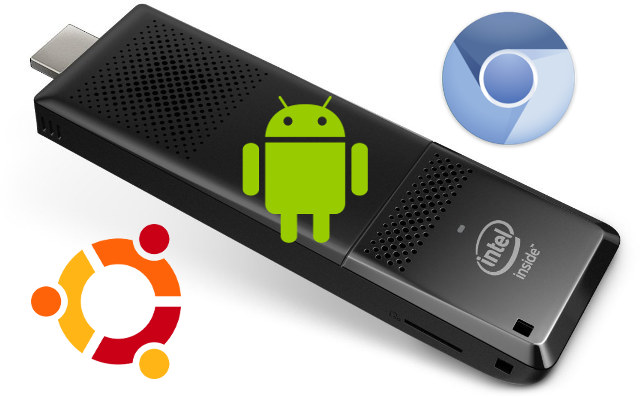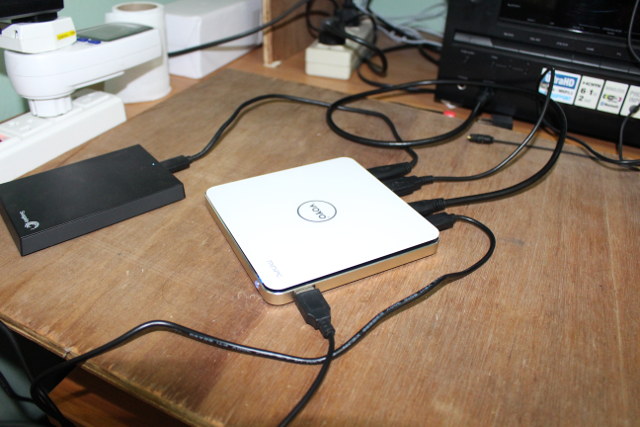Rockchip RK3229 is an exciting media processor because it’s found in ultra low cost TV Boxes such as MXQ-4K, outputs up to 4K @ 60 Hz, and supports 4K video decoding of 10-bit H.264, 10-bit H.265 and VP9, including videos with very high bitrates (200+ Mbps). That’s the theory, which I’ve put to the test with MXQ-4K TV box. Since the network interfaces of the device are limited to 100M Ethernet and 802.11n WiFi, and some videos are well above 100 Mbps, I’ve decided to test video playback from a USB hard drive instead. I’ve tried the three pre-installed video player apps: Kodi 15.1, “Video”, and “Video Player” , and they all have similar capabilities except Kodi is a little less stable on this device. The system detected my 4K TV (LG ) and automatically set the resolution to 3840×2160 @ 60 Hz, which I used for the remainder of […]
Run Android Apps in Linux with Shashlik Android Emulation Layer
There are already ways to run Android apps in Linux distributions such as Ubuntu or Debian, including the Android SDK emulator, running Android-x86 or Remix OS in a virtual machine, or using Genymotion, but those solutions are a little cumbersome to setup. Shashlik Android emulation layer aims to simplify the process of running Android apps in their own window within Linux desktop distributions. The Android apps can be started from the start up menu or dash like any Linux program. The apps are currently running inside an emulator so you actually boot a stripped down version of Android each time you start the app, which means they’ll take a little while to start. OpenGL and graphics are all rendered on the host for better performance. In the future, the emulator (virtual machine) may be dropped, and instead Shashlik could simply become a container, which requires rewriting libbinder in userspace There […]
Zidoo X5 TV Box Review
Zidoo X5 is TV box running Android 5.1 powered by Amlogic S905 processor like so many competing products on the market. I’ve already listed the full specs and taken pictures of the Zidoo X5 case and hardware, so today we’ll see how the device performs against the many Amlogic S905 mini PCs I’ve reviewed so far, and if it fixes some common bugs. First Boot and First Impressions Before starting the media player I’ve connected all cables and made sure to fill the two USB ports with a bunch of peripherals including a 1TB hard drive, keyboard, webcam, and so on. There’s no power button, and the device boots immediately once you connect it to the mains, with a standard boot time being around 40 seconds. The company has used the exact same Zidoo launcher as in their X6 Pro TV box, however they’ve decided to use a 1280×720 framebuffer, […]
64-bit ARM (Aarch64) Instructions Boost Performance by 15 to 30% Compared to 32-bit ARM (Aarch32) Instructions
Yesterday was quite an eventful day with the launch of two low cost 64-bit ARM development boards, namely Raspberry Pi 3 and ODROID-C2, and as usual there were some pretty interesting discussions related to the launch of the boards in the comments section. One of the subject that came is that while Raspberry Pi 3 board is using a 64-bit processor, the operating systems are still compiled with 32-bit instructions (Aarch32) and even optimized for ARMv6, and they intend to keep it that way according to Eben Upton interview: Eben readily admits that not all the capabilities of the new parts are going to be used at launch, however. “Although it is a 64‑bit core, we’re using it as just a faster 32-bit core,” he reveals about the Pi 3’s central processing unit. “I can imagine there’d be some real benefits [to 64-bit code]. The downside is that you do […]
Review of K1 Plus Android TV Box with Combo DVB-S2/DVB-T2 Tuner
VideoStrong has launched K1 Plus TV box powered by Amlogic S905 processor last year, and I had the chance to review their model last November. But here I am reviewing K1 Plus again. Why? That’s because the company’s has several K1 Plus models: the “standard” version that’s just like any Android TV boxes, and the DVB version with DVB-S2, DVB-T2/C, or DVB-T2/C + DVB-S2 combo, and the latter is the one I’m reviewing today. K1 Plus DVB combo teardown revealed that the main board was exactly the same as K1 Plus “standard”, and that only a tuner card was added. So I’ll have a two part review with the first part checking if they fixed any of the bugs found on K1 Plus “Standard” with “November 2015” firmware in the new “January 27, 2016 DVB” firmware, and the second part will focus on testing DTV app with DVB-S2 and DVB-T2, […]
Eny EM95 Amlogic S905 TV Box Review
CNXSoft has already taken some pictures of Eny EM95 Amlogic S905 TV box, so I’ll take over from here as I received my ENY EM95 today and I was excited. I have not got a new Android device in a while. First Impressions I opened it up to find a tiny box that has a display on it. Seems interesting. While booting it says boot and the rest of the time it shows the time in 24 hour format and a few other indicators that I didn’t find particularly useful. In the retail box is the device remote and HDMI cable and power supply. I noticed no micro or mini USB port to flash firmware. I don’t have a type A to type A cable so will need to pick one up. I was working from home today so I was able to open immediately and play with it for […]
Android, Chromium OS, and Ubuntu on Intel Atom x5 Compute Stick. What Works, What Doesn’t.
The latest “STK1AW32SC” Intel Compute Stick, also called Sterling City, is powered by an Intel Atom x5-Z8300 processor with 2GB RAM and 32GB storage, and pre-loaded with Windows 10. There’s also a version with operating systems dubbed STK1A32SC, but currently only the Windows version is available on Amazon US. That doesn’t not mean you can’t try to install other operating systems on the TV stick, and that’s exactly what Ian Morrison has done with Android 4.4 & 5.1, Phoenix OS, Remix OS (alpha), Chromium OS, and Ubuntu. If you want to know how to install the operating systems, you can follow the instructions for Ubuntu , Chromium OS, or Android/ Remix OS/ Phoenix OS. Bear in mind that installing Android also require that you install Ubuntu first, and there are quite a lot of steps, and once you’ve installed Chromium OS, you could also run Ubuntu using Crouton. So […]
Voyo V3 Intel Atom x7-Z8700 mini PC Review with Windows 10
Voyo V3 is one of the first Cherry Trail mini PCs based on Intel Atom x7-Z8700 quad processor that promises both higher CPU and GPU performance, and more I/O connectivity compared to Intel Atom x5 platforms. I’ve already posted pictures of the device and its guts in the first part of the review, so today in part 2 of the review, I’ll focus on testing how the device perform with its pre-installed operating system: Windows 10 Home. Setup and System Information There’s no much to say about setup for this device, since all you have to do is to connect the cable, and press the button to access Windows 10 desktop. There are however two interesting aspect of the boot process: As you connect the power supply, you’ll see the power button blue LED lit, but it does not mean it has started. I could see the power consumption was […]


